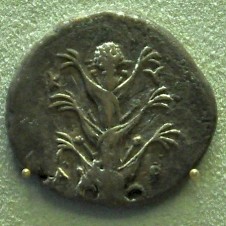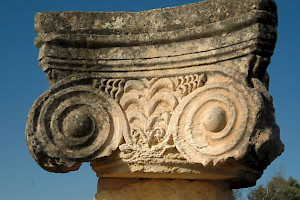Silphium
Silphium (Greek σίλφιον): unidentified, now extinct plant from ancient Cyrenaica.

According to the Greek researcher Herodotus, who lived in the fifth century BCE, the Greek city of Cyrene was founded in a year that we call 632 BCE.note After about half a century, the city's wealth, as documented in the archaeological record, started to increase rapidly and we know that this incredible boom was based on the export of a plant that was called silphium.note
The name silphium is not Greek, which suggests that the settlers learned about its properties from the Libyans living in Cyrenaica. From the sixth century BCE onward, the silphium trade is documented. Apparently, both the herb itself and the milky, resinous juice (laserpicium) that was extracted from either the root or the stem had medicinal properties.
According to the Natural History by the first-century Roman author Pliny the Elder, silphium was an excellent contraceptive,note while other ancient authors were confident that it was a cure against throat diseases, cough, and almost any other illness.note People ate the stems and the leaves, but they could also use dried roots to spice up their food.note

Silphium is now extinct. From representations, we may deduce that it was a type of giant fennel, but we cannot be certain. What we do know, however, is that the Greek biologist Theophrastus, a disciple of Aristotle, identifies silphium a wild plant that avoids cultivated soils.note If this is true, it is possible that the plant may have disappeared because in the Roman age, the Cyrenaica became an intensively cultivated region. The elder Pliny mentions an attempt to cultivate a cheaper and inferior sort of silphium, which has been identified with asafoetida.note
Silphium is shown on the coins from Cyrene but also on the capitals of the sanctuary of Asclepius in Balagrae, a bit west of Cyrene. Of course, this was not just local pride but also a fitting tribute to a healing god.